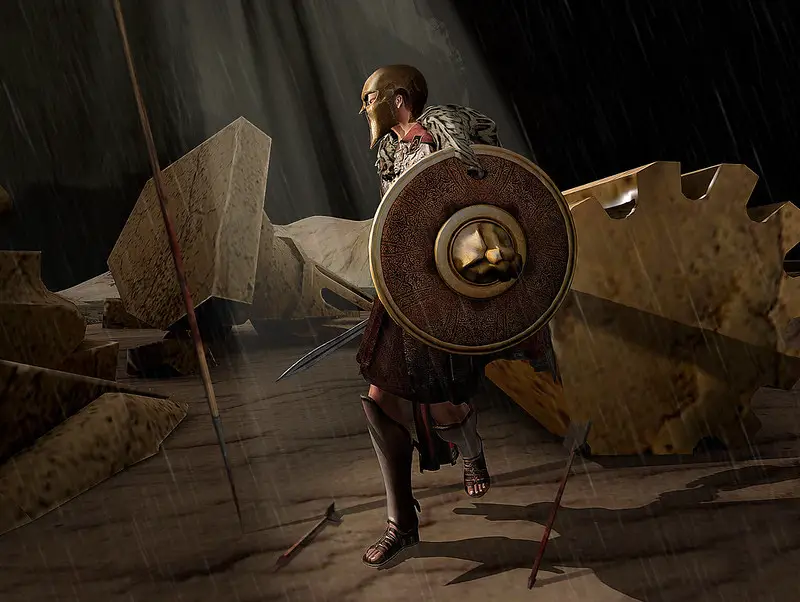
The Persian Empire was a powerful ancient civilization that spanned from the 6th century BCE to the 6th century CE.
It was one of the largest empires in history and covered much of Asia and parts of Europe.
This timeline outlines some key events during the rise and fall of this influential empire, including its major rulers, wars, conquests, and contributions to culture.
From Cyrus the Great to Darius III, this timeline demonstrates how the Persian Empire shaped human history for more than 800 years.
550s BCE
The Persian Empire began with the unification of Persia by Cyrus the Great in 550 BCE.
He was crowned King of Anshan and created a powerful kingdom that would eventually become one of the world’s largest empires.
His reign marked the beginning of the Achaemenid dynasty, which lasted until 330 BCE.
During this time, Persia expanded its power and influence, conquering other regions of the ancient world.
Notable accomplishments include the creation of a postal system, freeing Jews from Babylonian captivity, and introducing a unified set of laws.
This period also saw advances in technology, mathematics, and astronomy that would become influential to later civilizations.
- Read also: 10 Fascinating Ancient History Facts
- Read also: 10 Fascinating Egyptian Mythology Facts
334-331 BCE
In 334 BCE, Alexander the Great of Macedon invaded Persia and defeated Darius III in a series of battles.
The Achaemenid dynasty ended with his death, and the Persian Empire was divided into several states known as the Hellenistic Kingdoms.
Although Persian culture was heavily influenced by the Greeks, some areas managed to maintain their independence and unique traditions.
This period saw a shift in trade routes and the rise of religious syncretism, blending different cults and beliefs into one.
224-651 CE
In 224 CE, Ardashir I founded the Sasanian Empire after taking control of Persia from the Parthians.
During this period, Persia experienced its second golden age and became an influential power in the region.
The Sasanians were known for their impressive architecture, literature, and art. They also created a powerful military that helped defend against invaders from surrounding empires.
Notable accomplishments include the construction of the Grand Canal of Iran and the compilation of the Sasanian Code of Laws.
The Sasanian Empire ended in 651 CE with the invasion of Muslim Arabs, who brought Islam and new customs to the region.
661-1219 CE
The Islamic Caliphate was established in 661 CE by Ali ibn Abi Talib, the cousin, and son-in-law of Muhammad.
This period saw the spread of Islam throughout Persia, as well as advances in science, medicine, and philosophy.
Notable accomplishments include the establishment of an astronomical observatory and the translation of Greek works into Arabic.
In 1219 CE, Genghis Khan invaded and destroyed much of the region, bringing an end to the Islamic Caliphate.
1220–1501 CE
The Mongol Empire was established in 1220 CE and controlled much of Persia until 1501 CE. During this period, Persia experienced great destruction and chaos.
However, it also saw advances in trade, technology, and the arts. Notable accomplishments include the founding of the Timurid dynasty and the patronage of great poets such as Rumi.
The Mongol Empire ended in 1501 CE with its fragmentation into smaller states.
1501–1736 CE
In 1501 CE, Ismail I founded the Safavid dynasty and established Shia Islam as the official religion of Persia.
This period saw a resurgence in Persian culture and arts, with great works such as The Shahnameh being produced.
Notable accomplishments include the establishment of diplomatic relations with European powers, advances in architecture and metalwork, and the creation of a unified Persian identity.
The Safavid dynasty ended in 1736 CE with the invasion of Afghanistan.
1736–1925 CE
In 1736, Nader Shah Afshar established the Afsharid dynasty and brought an end to foreign invasions for a time.
This period saw the rise of the Qajar dynasty, which lasted until 1925.
During this period, Persia experienced a revival in trade and arts, but it was also marked by political turmoil and foreign interventions.
Notable accomplishments include advances in science and technology, as well as the establishment of modern educational institutions.
The Qajar Dynasty ended in 1925 CE with the establishment of the Pahlavi Dynasty.
1925–1979 CE
The Pahlavi dynasty was established in 1925, and during this period Persia experienced great economic and political advances.
Notable accomplishments include modernization efforts, the successful oil industry, significant advancements in science, and the development of modern infrastructure.
This period also saw a rise in nationalist sentiments and political activism, which eventually led to the overthrow of the Pahlavi dynasty in 1979 CE.
The Iranian Revolution ended this era and ushered in the Islamic Republic under Ayatollah Khomeini.
- Read also: Top 10 Sumerian Mythology Facts
- Read also: 10 Greek Mythology Facts That Most People Don’t Know
1979–Present CE
Since the Iranian Revolution of 1979, Iran has been an Islamic Republic under the rule of Supreme Leader Ayatollah Khamenei.
This period has seen advances in technology and infrastructure, as well as a shift towards greater religious conservatism.
Notable accomplishments include becoming an important player in global politics, increasing access to education, and making progress in science and medicine.
However, Iran has also experienced economic hardship due to U.S.-led sanctions and a lack of foreign investment. The current state of affairs remains uncertain as tensions between Iran and other nations remain high.
Overall, the history of Persia has been one of great achievements, destruction and turmoil, and ever-shifting political climates.
From Genghis Khan to Ayatollah Khamenei, it is a nation that has seen many changes over the centuries and will surely continue to evolve in the years to come.



